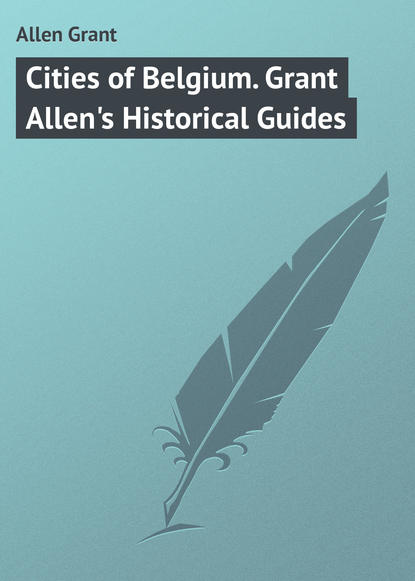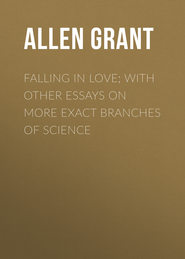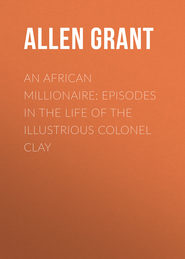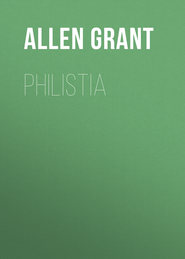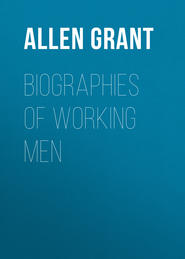По всем вопросам обращайтесь на: info@litportal.ru
(©) 2003-2024.
✖
Cities of Belgium. Grant Allen's Historical Guides
Настройки чтения
Размер шрифта
Высота строк
Поля
123. Cranach the Elder (German 16th cent.): *Adam and Eve. Fine specimens of the later northern nude of the early Renaissance, interesting for comparison with the cruder realism of Van Eyck. As yet, however, even the figure of Eve has relatively little idealism or beauty. Excellent stag in the background.
361. A good Pourbus. Beyond the door, 536, Flemish school: (Hugo Van der Goes?). Donor, a lady in a nun’s dress (?), with her name-saint, St. Barbara, bearing her palm as a martyr: in the background, her tower with the three windows. To balance it, 536, Her brother (?) or husband, with his patron, St. James. (Staff and scallop-shell.)
Above, 84, Triptych by Jan Coninxloo of the History of St. Nicholas. (The wings are misplaced.) R. wing (it should be L.), St. Nicholas, three days old, stands up in his bath to thank God for having brought him into the world. Central panel, the young St. Nicholas enthroned as Bishop of Myra. L. wing (should be R.), The Death of St. Nicholas, with angels standing by to convey his soul to Heaven. A good transitional Flemish picture. Beneath, tolerable portraits.
361a. A late Flemish Virgin, with portrait of the donor and St. Francis receiving the stigmata.
572. Sir Anthony More. Portrait. Above it, 595, an Entombment, where note again the conventional grouping.
337. Wings of a triptych by Bernard van Orley. The centre is missing. L., Martyrdom of St. Matthias. R., The Doubting Thomas. In the background, Lazarus and Dives, and other episodes. Renaissance architecture.
4. Van Alsloot: The Procession of the Body of St. Gudula at Brussels: of the Spanish period, with the guilds named. Interest purely archæological. Each guild carries its mace and symbol. (The second part comes later.)
586. Above this, skied, are four good female saints, transitional, named on labels.
574. Portrait, of the school of Van Orley: lady with a pink, pleasing. Italian influence is obvious.
505. Portrait of a lady, by M. De Vos. Early 17th century, marking the latest transitional period. It belongs to a destroyed triptych.
79. Breughel the Elder: St. Michael the Archangel conquering the devils. A hideous nightmare of a morbid and disordered imagination.
627. Crucifixion, by an unknown German, with small figures of donors, and Rhine background.
597. German school. Tree of Jesse, of purely symbolical interest.
504. *Portrait by M. De Vos. Probably husband of (and pendant to) the previous one. It was the other wing of the same triptych.
5. Van Alsloot: Remainder of the Procession of St. Gudula, with a quaint dragon, and the Maison du Roi in the background. Observe, near the centre, the personification of the patron, St. Michael: elsewhere are St. Christopher, Ste. Gudule, etc.
561. Two panels from a triptych attributed to Van Orley. Centre, missing. L., The Birth of the Virgin. Note this for the conventional features: St. Anne in bed; attendant feeding her: bath for infant. In the background presentation of the Virgin in the Temple: Joachim and Anna below: the Virgin ascending: the High Priest welcoming her: the Virgins of the Lord by the side. R., Joachim’s offering rejected. In the background, the meeting of Joachim and Anna at the Golden Gate, and the angel foretelling the Birth of the Virgin. Compare this with the great Quentin Matsys, observing especially the money falling from the table.
76. Another example of a later Last Judgment.
584. Mostart: Two stories from the life of St. Benedict. (1) The miracle of his dinner. (2) As a youth, he mends by prayer the dish broken by his nurse. (See Mrs. Jameson’s Monastic Orders.)
Now pass through Room [VIII.], containing chiefly late Italian and French pictures (which neglect for the present) and go on into
Corridor A,
to the L., overlooking the Sculpture Gallery. This takes us at once into the Later Flemish school of Rubens and his followers, whose works fill all these large corridors, which are admirably adapted for them. Begin to the R. of the door. (Remember that I do not attempt criticism, but confine myself to historical indications.)
230. Jordaens: Fine landscape, with city to the right. As yet, however, landscape dare not stand entirely on its own merits. Therefore, we have here in the foreground figures of Eleazar and Rebecca at the well, which retain the tradition that pictures must have some sort of sacred purpose.
194a. Unknown. Interior of a picture-gallery, with well-known pictures.
L. of the door. 465. Van Thulden: Flemish Wedding Feast. Landscape is beginning to triumph now; it gets rid of all pretence of sacredness, but still retains small figures in the foreground. Landscape for landscape’s sake is hardly yet dreamed of.
135. De Crayer, one of the best imitators of Rubens: *Adoration of the Shepherds, in the master’s manner.
179a. Good Still Life by Fyt.
379. Rubens: **Coronation of the Virgin by God the Father and the Son, the Holy Ghost hovering above in a glory. This altar-piece, for an altar of Our Lady, is a magnificent specimen of the master’s rich and luminous colouring. The crimson robe of the Christ, the blue and lilac harmony on the Madonna, and the faint yellow of the Father’s robe, are admirably contrasted. So are the darkness of the lower clouds and the luminosity of the upper region, recalling Titian’s famous Assumption at Venice. The little boy angels are sweet and characteristic. Here you may begin to appreciate the force, the dash, the lavish wealth of Rubens. (According to Rooses, however, the work of a pupil, touched up by the master.)
Then, unnumbered, Jordaens: *Susannah and the Elders: a very Flemish and matronly Susannah. The nude of Rubens, without the glorious touch of the master: but a good picture.
392. Study by the same for the ceiling in Whitehall.
386. Fine *portrait by Rubens of a fair man (J. C. de Cordes). “Inferior work.” (Fromentin.)
390. Rubens: **Charming little Madonna and Child (called “Our Lady of the Forget-me-not”), in a garden of roses (the landscape by J. Brueghel). One of his best small pictures, in a careful style.
387. Rubens: *Portrait: Wife of the last: in his finest and richest portrait manner, which contrasts in many ways with his larger and freer allegorical style. (Fromentin thinks poorly of it.)
389. In the corner, four Fine *Heads of Negroes, a study for the Magi, by Rubens. Not caricatured, but full of genuine negro character.
Above it, 219. An Adoration of the Magi by Herreyns: Interesting only as showing the persistence of the school into the 18th century.
235. Jordaens: *An Allegory of Abundance. Studies from the nude in the style of the school: meritorious.
Pass the door of the Dutch school. Beyond it, more Still Life, excellently painted.
240. Next door, Jordaens: *Nymph and Satyr. (This corridor is largely given up to works by Jordaens, who was a Protestant, and preferred heathen mythological subjects to Catholic Christian ones.
434. Snyders: 17th century: *Still Life, which now begins to be painted on its own merits. This last is by the great animal painter of the Flemish school.
238. Jordaens: Very Flemish *family group, with a somewhat superfluous satyr. (Subject nominally taken from the fable of the Satyr and the Wayfarer.)
302. Vandermeulen: View of Tournai and landscape, with the siege by Louis XIV. introduced for the sake of figures in the foreground.
Above it, 240 (? old number). De Crayer: St. Anthony and St. Paul the Hermit. Interesting for persistence of the typical figures.
The other pictures in this corridor are, I think, self-explanatory.
Now enter
Room III
Right hand, further corner from door, Still Life by Snyders.
100. Good portrait by Philippe de Champaigne.
387a. Splendid *portrait by Rubens (according to Rooses, by Van Dyck).
This room also contains several fine pictures by Teniers (father or son) and other late Flemish painters, deserving of attention, but needing no explanation. (Portraits, etc.) Do not imagine because I pass them by that you need not look at them.
Now enter
Corridor B





